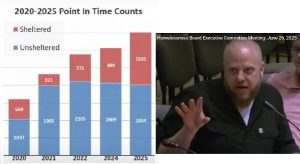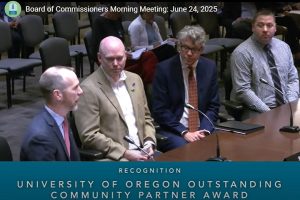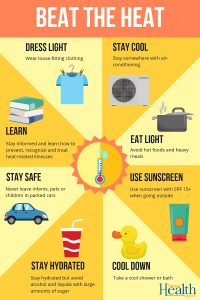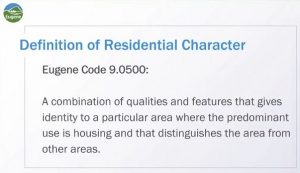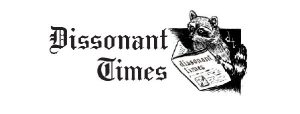Use your CERT training as part of a neighborhood disaster response team
9 min read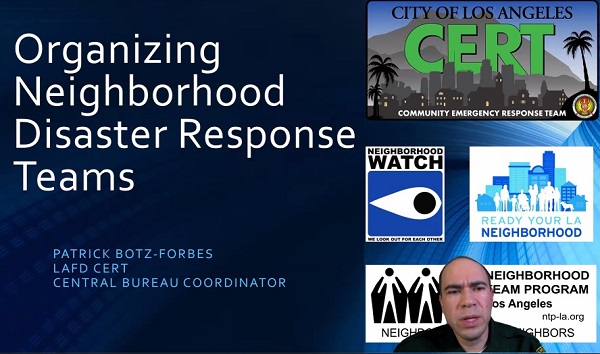
During a disaster, 95% of the survivors are rescued by members of the community. From Los Angeles on March 20, the home of the Community Emergency Response Team program:
Patrick Botz-Forbes: My name is Patrick Botz-Forbes. I am the LAFD Community Emergency Response Team (CERT) Central Bureau Coordinator, and our topic is going to be organizing neighborhood disaster response teams.
The purpose of CERT from its inception and in talking with the grandfather of CERT, Chief Borden, as we were describing our neighborhood team program and what we were really trying to do with it, he echoed that that was always the intent: to take the CERT training down to the neighborhood block level and really create response teams that can and do respond to a disaster before the professionals can arrive.
[00:00:56] And so really what we’ve done is we’ve extended CERT down to that bottom level and really completed the promise.
[00:01:03] There’s always been disasters around the world, but we’re seeing an increase in severity and frequency of the number of disasters. We’ve always had periodic really bad hurricanes, tsunamis, or earthquakes, but we’re seeing it month after month—in some areas, week after week—and the areas that are getting hit are getting hit over and over again with not only the same kind of disaster but increasing levels of disaster.
[00:01:38] The origin of the CERT program, the Community Emergency Response Team, was here in Los Angeles City. And we’ve really been lucky because while we had Northridge in ’92 (the Northridge earthquake), which was bad and really bad if you lived in that area, other parts of Los Angeles, we lost power, we had very little damage, if any. But if you lived in the valley, you lived on the West Side, it was horrific. Buildings collapsed, freeways collapsed. And those people who experienced it, certainly are not going to forget it.
[00:02:15] But other parts of Los Angeles—on the Eastside, Northeast LA, Coastal San Pedro, really did not experience anywhere near that kind of level of devastation, if anything.
[00:02:28] In fact, the last regional disaster the Los Angeles area experienced was the 1938 Los Angeles flood. Los Angeles is a basin. All the rain comes in and flows through the city throughout the region from the mountains all the way out to the coast. And the last couple of years we’ve started to see the atmospheric rivers start to hit us. Last year we got weeks of rain, torrential downpours, that really tested the limits of our infrastructure. And even in February, we got some pretty significant rain. We got over half of our year’s worth of rain in one day.
[00:03:12] And we’re expected to have these atmospheric rivers every year now. And we can only expect that eventually it’s going to reach a point where the infrastructure is not going to be able to handle it.
[00:03:25] And certainly, another earthquake is always on the forefront of our mind.
[00:03:31] In Los Angeles City we have a fully professional fire department, and I would argue one of the best in the world. But we have about 3,500 firefighters spread over three shifts. There’s about 1,000 firefighters on duty at any given time in the city of Los Angeles, and if you look at the LA region, we’re talking about 10 million people that live in this area.
[00:03:54] So when something overwhelms them, such as a disaster, and really that is the definition of a disaster—a disaster is anything that overwhelms the responders in terms of staffing, resources, time—if something happens or multiple incidents happen all at the same time, it really can stress the limits.
[00:04:20] The expectation is that we have mutual aid, we’re going to have first responders coming from other parts of the county, other parts of the state. But if you’re talking about a true regional disaster, such as an earthquake along the San Andreas Fault, the entire region is going to be impacted.
[00:04:37] And you’re going to be looking for resources from other states, and that’s going to take time. It’s going to take a couple days, if not a week, to really start to get them in here. We’re not used to having disasters. We’re not used to preparing for disaster. We’re not used to having not enough resources.
[00:04:56] And it tends to be that people fear the unknown, in that the unknown is scary. And ‘I don’t want to think about something that’s scary.’ I don’t want to prepare for what may be the worst day of my life so that I can make sure that it’s not the worst day of my life.
[00:05:15] It’s a little counterintuitive if you ask me, but it is human nature. ‘I don’t want to think about something that scares me so I’m not going to think about it, I’m not going to talk about it, I’m not going to plan for it, I’m not going to train for it,’ and then when it does happen… I mean, some people have said, ‘Well, I guess I’m just going to die.’ But we already know you’re probably not. Well, 99.99 % of you are going to survive it.
[00:05:44] So it’s not the earthquake that you’re preparing for, it’s the aftermath of the earthquake that you’re preparing for. It’s making sure that when the power goes out and your water is not safe to drink and your natural gas doesn’t work, that you have food that doesn’t require heating, or you have a way to heat it and boil water and you have a way to charge your flashlights and whatever creature comforts you need. Because the reality is: Infrastructure is going to get damaged and chances are we’re going to be without power for days if not weeks or worse.
[00:06:23] It’s been said over and over again that, ‘It takes a village,’ but it’s really a community that plans and practices and trains together that is going to recover faster. Because if we’re trying to recover on our own, it is going to be a massive burden.
[00:06:41] You’re trying to take care of your family. You’re trying to pick up the pieces—quite literally. Not everyone has the skills that they might need.
[00:06:50] So if you rely on your neighbors and you help your neighbors, you’re not mooching off your neighbors, you’re not taking advantage of your neighbors, you’re contributing to that community—you’re all going to get through it faster and better and more comfortable than if you try and do it by yourself.
[00:07:07] We really want to emphasize that it is preparedness that empowers you to not be afraid. If you know that you’re prepared and you’re ready and you’re trained and you know how long your supplies are going to last you, what is there to fear?
[00:07:24] If I have supplies and I have training, I can mitigate that and at least know the first week at least, maybe two weeks, I’m going to be okay. Starts to get to week three, maybe four, going to be relying on our neighbors a little bit more at that point. But hopefully by then we’re going to have professional responders coming in from all over the country, and they’re going to help us get on our feet faster.
[00:07:50] John Q: Immediately after the disaster, you will rely on your own skills and those of your neighbors. That’s where the CERT program and the neighborhood disaster teams come in.
[00:08:00] Patrick Botz-Forbes: Everything we’ve learned in a CERT training is what firefighters learn. And that’s how it was designed. It was designed by the fire department and it was designed for that reason so that we really do get the basics.
[00:08:16] This is always open to the community. We share this on Nextdoor. We want to get people to take the basic training, learning how to do basic medical using triangular bandage, how to create a sling and swathe with it, how to do hands-only CPR. Unless you actually do the hands-on skills yourself, you don’t know if you’re doing it right. The CERT program is a great training program, it does a lot. It gives you a lot of resources, it gives you a toolkit that you can utilize for almost any situation you encounter.
[00:08:53] What’s next? This neighborhood team program really takes CERT to the next level. It combines the CERT training, it combines the Map Your Neighborhood and even works with Neighborhood Watches. It’s really community grassroots-driven.
[00:09:10] We need people who say, ‘Hey, I want to be a neighborhood team leader. I want to build the team in my neighborhood.’ And then we work with you and help you do this and start building the team with you. And we’ll focus on helping you recruit other members, train you to be a better leader, guide you in the creation of your neighborhood disaster response team.
[00:09:35] What we’ve done is standardized it and said, ‘Okay, here’s the baseline template. Here’s how you get started. You don’t have to do this, but if you want an idea of how to do it, here’s how you can do it.’
[00:09:47] We do an orientation lecture series. We developed step-by-step guides to really give you that basis for how you get started and where you want to go with things. And then we developed these drill templates so that we train and drill to that same level every single time, but it also doesn’t take six months to plan a drill. We can do these pretty quickly because we’re doing the same setup every single time.
[00:10:13] And we’re going to link you up so that you can get continued support throughout this journey. We’re going to work with you to find a staging area that your team is going to be able to go to after the earthquake and work with you and your neighborhood council to put a kit there that’s going to have everything you need for the first three hours of operation to get started: whiteboard, clipboards, forms, radios, medical resupply.
[00:10:20] After we set up at the staging room to play out teams, we’ll deploy out damage assessment teams very similar to what the fire department does. Identify and report incidents. You’re going to triage and stabilize them and then you need to move on because you need to know what’s out there, so you can prioritize them.
[00:11:00] Now, one thing that we specified is that neighborhood disaster response teams are both CERT-trained and non-CERT-trained members. If there’s someone in your neighborhood that wants to be a part of the solution, and they haven’t taken the CERT training, they’re more than welcome to drill with us, train with us. Hopefully they’ll take the CERT training at some point, but they don’t have to.
[00:11:21] This is designed to be a whole neighborhood, whole community response. We want to engage with businesses, we want to engage with houses of worship in a purely residential area. We’re going to work with what we have and find a solution for you.
[00:11:36] And then work with your neighbors on the plan of: Where we we all going to meet? Who are the priority people we need to make sure are okay? And if there’s anybody trapped, how are we going to get them out? And what is our capabilities and skills? Then train to that plan.
[00:11:54] You train, you learn the skills, and then you put them in action and make sure that they work. Make sure that everybody’s capable of doing it.
[00:12:01] I will tell you: No drill runs according to plan. No drill is perfect. There are always missteps, there are always mistakes, there’s always things that can be done better. And that should be something that you strive for is learning, what can we do better next time? Not focusing on, ‘Well, that didn’t go according to plan, so we all failed.’
[00:12:25] Because we didn’t. We learned and that’s the key. We learned what didn’t go right. We learn where we need additional training. We learn where we need additional practice. We learn so we can do it better next time and that should always be the goal. We always want to do it better next time.
[00:12:42] I recommend you drill, practice quarterly, if not every month. Every time there’s an opportunity to take training, go take it. Every time there’s an opportunity to go do a drill, go do it. Especially if there’s no cost to go doing it.
[00:12:57] And so we say: Prepare, plan, train, drill, and then more importantly: Repeat.
[00:13:06] John Q: From LA, an overview of neighborhood disaster response teams. Chief Frank Borden hoped that CERTs would serve in their own neighborhoods, with CERTs and non-CERTs, in disaster response teams. Contact your neighborhood association to get started. They can help you prepare, plan, train, and exercise with nearby neighbors.
